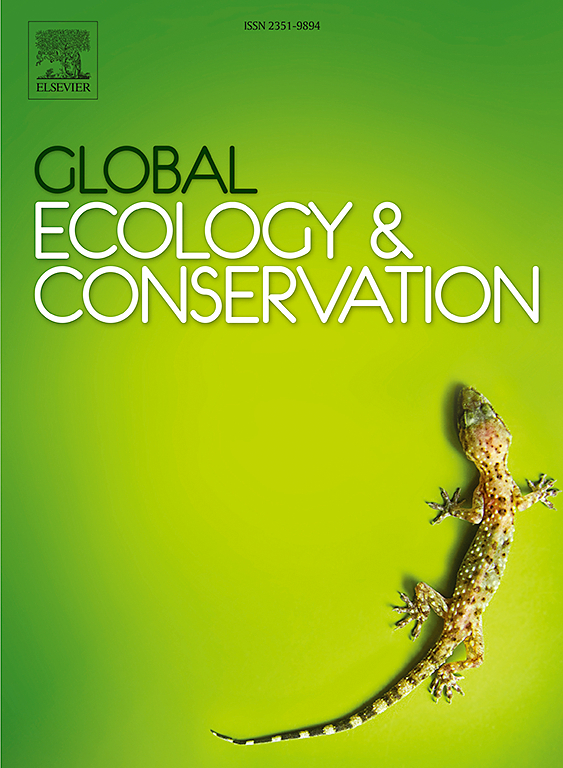The vulnerability of endemic vertebrates in Sri Lanka to climate change
IF 3.5
2区 环境科学与生态学
Q1 BIODIVERSITY CONSERVATION
引用次数: 0
Abstract
Rapid climate change and ongoing habitat destruction pose a serious threat to global biodiversity. Understanding how species shift their geographical distributions in response to climate change is important for planning conservation actions for the biodiversity of isolated islands like Sri Lanka. Here, we used Maximum Entropy (MaxEnt) modeling to predict current and future (by 2100) distributions of 233 vertebrate endemics to Sri Lanka under three general circulation models of the atmosphere (GCMs) and three shared socioeconomic pathways (SSPs). We used six bioclimatic layers, together with land use, human population, elevation, and the distance to water, as environmental factors for SDMs. Resultant maps were used to calculate the area of habitat (AOH) of each species. Using general linear mixed models, we identified a significant influence of GCM, SSP, and current elevation on the change in AOH. The southwestern wet zone and the montane areas of Sri Lanka were found to be the most suitable regions for the species currently and in the future. However, all climate change scenarios indicated endemic species extinctions, which may be proportionally fewer for mammals and birds, but are expected to occur for all SSPs in amphibians and reptiles, ranging from 1.4 % to 22.5 % of these taxa in SSP5. Also, species declines were specific and severe at higher elevations. Our study highlights the risk to montane endemic vertebrates, yet given the vulnerability of the wet zone to urbanization, even lowland endemic species face an uncertain future.
斯里兰卡特有脊椎动物对气候变化的脆弱性
快速的气候变化和持续的栖息地破坏对全球生物多样性构成严重威胁。了解物种如何改变其地理分布以应对气候变化,对于规划斯里兰卡等孤岛的生物多样性保护行动非常重要。本文利用最大熵(MaxEnt)模型,在三种大气环流模式(GCMs)和三种共享社会经济路径(ssp)下,预测了斯里兰卡233种脊椎动物的当前和未来(到2100年)分布。我们使用了6个生物气候层,连同土地利用、人口、海拔和与水的距离,作为sdm的环境因子。利用所得图计算各物种的生境面积(AOH)。使用一般线性混合模型,我们确定了GCM、SSP和当前海拔对AOH变化的显著影响。斯里兰卡的西南湿区和山区被认为是目前和将来最适合该物种的地区。然而,所有气候变化情景都表明地方性物种灭绝,哺乳动物和鸟类的灭绝比例可能较小,但预计所有ssp中的两栖动物和爬行动物都将发生灭绝,SSP5中这些分类群的灭绝比例在1.4 %至22.5 %之间。此外,物种的减少在高海拔地区是特定的和严重的。我们的研究强调了山地特有脊椎动物的风险,但考虑到潮湿地区对城市化的脆弱性,即使是低地特有物种也面临着不确定的未来。
本文章由计算机程序翻译,如有差异,请以英文原文为准。
求助全文
约1分钟内获得全文
求助全文
来源期刊

Global Ecology and Conservation
Agricultural and Biological Sciences-Ecology, Evolution, Behavior and Systematics
CiteScore
8.10
自引率
5.00%
发文量
346
审稿时长
83 days
期刊介绍:
Global Ecology and Conservation is a peer-reviewed, open-access journal covering all sub-disciplines of ecological and conservation science: from theory to practice, from molecules to ecosystems, from regional to global. The fields covered include: organismal, population, community, and ecosystem ecology; physiological, evolutionary, and behavioral ecology; and conservation science.
 求助内容:
求助内容: 应助结果提醒方式:
应助结果提醒方式:


